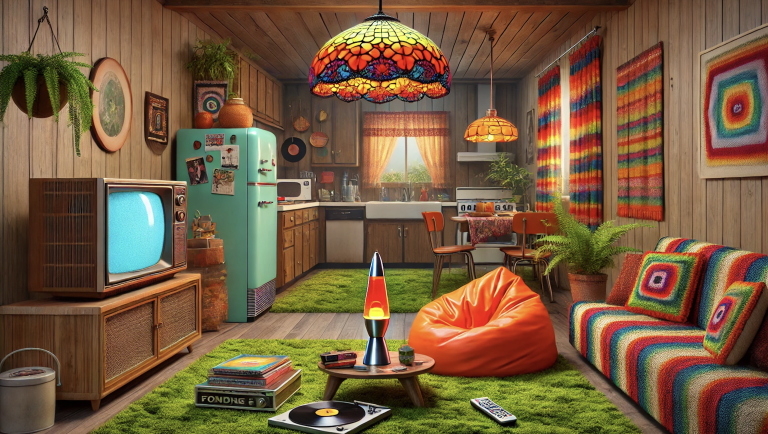Are you a creative spirit, eager to pour your artistic soul into vibrant designs? The exciting universe of graphic design may be your calling. From those just dipping their toes into the industry with entry-level positions, to seasoned veterans looking for senior roles, graphic design offers a canvas of possibilities.
Regardless if you’re a newcomer seeking openings in graphic design, or a skilled expert on the hunt for fresh challenges, the sector is brimming with potential. Full-time, part-time, freelance, remote, or in-person, you’ll find a spectrum of job possibilities, from internships and junior roles to many other career paths in the field.
Perhaps you’re hunting for jobs close to home, frequently keying in “graphic design jobs near me”. The vibrant regions of Abbotsford, Metro Vancouver, Lower Mainland, and Fraser Valley are teeming with opportunities for both local and remote graphic designers.
The sector’s variety expands to its multitude of specialized roles. If the digital world piques your interest, explore jobs in digital design, UI/UX, or advertising. Those with a flair for tangible products might find print, packaging, or branding design appealing. For artists and animators, positions in illustration and animation beckon.
Visual and multimedia designers have a place in this dynamic industry, too. And if you’re a novice, rest assured: the field is generous with positions that require no experience. From every interest to every skill level, a broad array of design jobs awaits.
Whether your tool of choice is Adobe Creative Cloud, InDesign, Photoshop, Illustrator, Sketch, Canva, or Figma, the industry is bursting with agency jobs. Capitalize on online resources like YouTube tutorials to refine your skills and draw inspiration from leading figures in your field.
Leadership roles are equally abundant. Art directors and design managers are highly sought-after, while tech-savvy creatives might find their homes in 3D and motion graphics design.
If you take pleasure in crafting informative visuals, consider infographic design. Likewise, a sea of opportunities lies in product design, startups, nonprofits, logo and typography design, and e-commerce.
The graphic design industry welcomes all experience levels. Be it an entry-level designer, a mid-level professional, or an experienced coordinator, there’s a niche for you.
Consider the benefits of working remotely from the comfort of your home, or perhaps expanding your horizons with Canadian graphic design careers. This sector offers bilingual roles, layout and vector design, social media design, multimedia artistry, visual communication, design consulting, and corporate graphic design. And that’s just the tip of the iceberg.
The opportunities continue to flow. Freelance illustration, concept art, user interface and experience design, design strategy, creative direction, magazine design, content creation, design leadership, junior art direction, digital artistry, visual design internships, and design project management – it’s a world ripe for exploration. In particular, working remotely for a local graphic design agency, with the freedom to set your own terms and a flexible schedule, could be the most rewarding approach to a career in this diverse field.
Work With Bl3nd Design, On Your Own Terms!
At the cutting edge of creativity, Bl3nd Design is stirring up the perfect mix of innovation and inclusivity. The secret ingredient? Talented graphic designers like you. With a smorgasbord of roles and a red carpet for remote workers, they’re reshaping the landscape of design opportunities. If you’re itching for a fresh splash of creative adventure, consider this your invitation to the party. Get in touch with Bl3nd Design, because the next big blend in your career might just be a pixel away.
Send us your resume to hello@bl3nddesign.ca
Please include samples of your work or a portfolio
If possible a cover letter, but not mandatory
Graphic Design Workflow Considerations
Graphic design is an exciting and diverse field that requires a blend of creativity, communication skills, and technical knowledge. As a graphic designer, you will need various equipment, software, tools, and specific experiences to be effective in your job. Here’s a rundown:
Equipment:
- Computer: A powerful desktop or laptop is crucial. Graphic design work demands a lot of processing power, so a computer with a robust processor, sufficient RAM, and a high-resolution display is vital.
- Graphics Tablet: A graphics tablet like those from Wacom can give you better control and precision, especially for digital painting, sketching, or detailed work.
- Scanner: If you do hand-drawn artwork, a scanner can help you digitize your work.
- Camera: A good-quality camera can be useful for capturing images for your designs or building a visual library.
- Printer: A high-resolution printer is useful if you’re working in print design.
Software:
- Adobe Creative Suite: This software suite includes industry-standard tools such as Photoshop for image editing, Illustrator for vector graphics, InDesign for layout and design, and After Effects for motion graphics and visual effects.
- Sketch: A popular tool for UI/UX design, especially for designing interfaces, websites, and apps.
- Figma: A cloud-based design tool that is increasingly popular for UI/UX design due to its collaborative features.
- CorelDRAW: A vector graphics editor similar to Adobe Illustrator.
- 3D Software: Tools like Blender, Maya, or Cinema 4D are used for creating 3D graphics.
Tools:
- Design Pens and Paper: These are essential for sketching out your initial ideas.
- Color Swatch Books: Pantone color guides or similar swatch books can help you understand how your work will look when printed.
- Light table: Useful for tracing and refining designs.
- Books and Magazines: To keep you updated with the latest design trends and provide inspiration.
Experience and Skills:
- Artistic Ability: A good sense of aesthetics, an understanding of color theory, typography, layout, and an eye for detail are all crucial.
- Technical Skills: Proficiency in design software is essential. You should also understand file formats, resolution, color modes, and print vs. digital specifications.
- Communication Skills: You’ll often need to discuss projects with clients or team members, so good verbal and written communication skills are vital.
- Problem-Solving Skills: Design is all about solving problems creatively. You’ll need to understand the client’s needs and find innovative ways to meet them.
- Time Management: Meeting deadlines while producing high-quality work is a big part of being a successful graphic designer.
- Continuous Learning: Design trends and tools change frequently. Being open to learning new skills and staying updated is important.
Remember, while having the right tools and skills is important, it’s your creativity and passion that will truly help you excel in the graphic design industry.
Websites to Find Graphic Design Jobs, Careers, and Contracts
Behance: Behance is a renowned digital platform that serves as a nexus between talented graphic designers and potential employers. This comprehensive online platform facilitates the showcasing of graphic design portfolios that span an array of design domains, thus allowing recruiters to gain an extensive understanding of a designer’s capabilities. Furthermore, this is not merely a job search engine but a vibrant community that fosters networking and collaboration, ultimately broadening the scope of opportunities for both burgeoning and experienced designers.
Dribbble: Dribbble holds a unique position in the world of graphic design as it operates as both a virtual exhibition space and a dedicated job portal. Talented designers can effectively utilize Dribbble to display their work, connect with their peers, and discover new professional opportunities. The interactive nature of the platform encourages feedback, discussions, and collaborations, thus enabling designers to continually refine their skills and stay in tune with industry trends.
LinkedIn: LinkedIn, with its widespread professional network, provides a diverse array of opportunities for individuals in the graphic design field. This platform goes beyond the mere functionality of a job portal and facilitates meaningful connections among professionals across a multitude of sectors. LinkedIn’s job search feature, combined with its ability to build and showcase one’s professional profile, makes it a valuable resource for graphic designers looking for new roles.
Indeed: Renowned as a global employment search engine, Indeed caters to a vast spectrum of professional sectors, including graphic design. Indeed’s expansive platform provides job seekers with numerous possibilities. From freelance to full-time positions, the site hosts a wealth of opportunities for graphic designers. In addition to its impressive database of jobs, Indeed also provides helpful resources like resume-building tools and career advice, ensuring an all-round job search experience.
Glassdoor: Glassdoor provides an in-depth look into the world of work, combining job postings with company reviews, salary reports, and insights into company cultures. This platform allows graphic designers to not only search for job opportunities but also to gain a more profound understanding of potential workplaces. This comprehensive approach can help job seekers to make more informed decisions about where they want to take their careers.
AIGA Design Jobs: As the professional association for design, the American Institute of Graphic Arts (AIGA) offers a job board specifically tailored to designers. The AIGA Design Jobs portal not only lists a multitude of graphic design opportunities but also provides resources for further professional development. By focusing exclusively on design roles, AIGA ensures that its users have access to highly relevant and specialized opportunities.
Coroflot: Coroflot serves as a dual-purpose platform for creative professionals, combining a job board with a portfolio-hosting network. This blend of features enables graphic designers to simultaneously showcase their work and explore job opportunities. Coroflot’s focus on the creative industries means that its job listings are highly relevant to graphic designers, making it an effective tool in the job-seeking process.
Krop: Krop is a hybrid platform that serves the needs of creative professionals by offering both a job board and a portfolio-hosting site. This dual approach allows graphic designers to showcase their work and talents while actively seeking new job opportunities. By focusing specifically on creative fields, Krop ensures that its job listings are tailored to the needs and interests of graphic designers.
Creativepool: Creativepool operates as a networking site and a professional community designed specifically for the creative industry. It’s a platform where graphic designers can showcase their projects, engage in industry discussions, and look for job opportunities. Creativepool works closely with brands and agencies, providing the latest industry news and promoting competitions, making it a comprehensive resource for the creatively inclined. With its emphasis on community and collaboration, Creativepool offers a unique space for designers to connect, learn, and grow professionally.
Google Jobs: Google has extended its search engine capabilities to include a job search feature, often referred to as Google Jobs. By aggregating job listings from multiple job boards, career sites, and other web sources, Google Jobs provides a comprehensive view of job opportunities across the internet. Its user-friendly search feature allows graphic designers to specify their job search based on various criteria like job title, location, date posted, and company type. This wide-ranging and inclusive approach ensures that job seekers have access to a diverse array of opportunities in the graphic design field.
Workopolis: Workopolis is a comprehensive Canadian job search portal, offering a robust and varied range of employment opportunities in the graphic design field. With an easy-to-use interface, Workopolis streamlines the job search process, allowing users to search by job title, keywords, or location. This website also provides helpful resources, like career advice and tips, for both job seekers and employers. Graphic designers can benefit from Workopolis’ extensive database of job postings from diverse sectors, ranging from corporate entities to non-profit organizations, thereby broadening their career prospects.
SimplyHired: SimplyHired is a job search engine that aggregates job postings from numerous websites, providing a comprehensive view of employment opportunities across various sectors, including graphic design. Its Canadian version focuses specifically on the Canadian job market, offering job seekers relevant job listings. The site’s advanced search functions enable users to refine their job search based on job type, location, salary estimates, and company, making it a versatile tool for those seeking graphic design positions.
Job Bank: Job Bank is a government-run job search portal in Canada, that provides a comprehensive range of job postings, including those in the graphic design field. The platform is unique in that it offers labor market information alongside job listings, offering job seekers insights into the demand, outlook, and wage rates for different roles. For graphic designers, this can be a valuable tool for understanding the broader landscape of their profession and making informed career decisions.
Upwork: Upwork is a global freelancing platform that connects professionals with businesses seeking specialized skills. It’s an invaluable resource for graphic designers seeking freelance opportunities. By hosting a plethora of job listings from organizations worldwide, Upwork provides designers with the flexibility to choose projects that match their skills and interests. Furthermore, Upwork facilitates direct communication between freelancers and employers, providing a space for negotiation and collaboration, making it a particularly dynamic environment for freelance graphic design work.
Best Ways to Prepare for a Graphic Design Job Interview
When applying for a position as a graphic designer, it’s crucial to present yourself as a skilled and creative professional who can contribute significantly to the company’s objectives. Here are some tips to help you stand out in your interview:
Research the company: It’s essential to understand the company’s culture, work style, and the types of design work they do. This understanding will help you tailor your responses and show that you’re a good fit for their team.
Show a strong portfolio: This is your opportunity to show off your skills and creativity. Make sure your portfolio is up-to-date and includes a variety of designs that highlight your versatility. Remember, it’s quality over quantity; each piece should reflect your best work.
Prepare a digital and physical portfolio: While it’s likely that you’ll share your portfolio digitally, it can be helpful to bring a physical copy to your interview. Some hiring managers appreciate being able to touch and see your work in print.
Know your portfolio inside and out: Be prepared to discuss each piece in your portfolio, including the thought process behind the design, challenges faced, and how you overcame them. This will show that you are thoughtful and considerate in your design approach.
Communicate effectively: Good communication is key in any job, including graphic design. Be prepared to explain your ideas and how you work with others. You need to prove you can handle criticism and feedback, work effectively in a team, and liaise with clients or other stakeholders.
Showcase your technical skills: Be ready to discuss the software and tools you’re familiar with. Adobe Creative Suite, including Illustrator, Photoshop, and InDesign, are typically essential. Knowledge of other tools such as Sketch, Figma, and UX design tools can also be a plus.
Demonstrate your understanding of design principles and trends: Talk about how you incorporate basic design principles in your work. You should also be aware of current design trends and how you can use or adapt them in your designs.
Problem-solving skills: Graphic design is about solving problems creatively. Provide examples of how you’ve used your design skills to solve a problem.
Be enthusiastic and passionate: Show genuine interest in the position and the work the company does. Enthusiasm can be infectious and can make you more memorable as a candidate.
Follow up after the interview: Send a thank you email or note after the interview expressing your appreciation for their time and your continued interest in the position. This shows your professionalism and can set you apart from other candidates.
Remember, each interview is a learning opportunity. Even if you don’t get the job, you can gain valuable insights and experience to help you succeed in the future. Good luck!
Different Ways to Frame Your Graphic Design Job Compensation
There are several ways a graphic designer can work with an agency. The structure of the workflow arrangement depends on a number of factors such as the agency’s needs, the project’s scale, the designer’s availability, and the budget. Here are some possible workflow arrangements:
Full-Time Employment: The graphic designer can be hired as a full-time employee of the agency. In this setup, the designer will work closely with the agency’s team on a daily basis. This type of relationship ensures the designer is fully involved and invested in the agency’s projects.
Part-Time Employment: If the agency doesn’t need a full-time designer, they can hire a designer on a part-time basis. This arrangement allows the designer to work with other clients or on personal projects, while still committing a portion of their time to the agency.
Freelance Contract: In this arrangement, the agency hires the graphic designer on a contract basis for a specific project. The designer works independently, but in collaboration with the agency, and is paid per project or by the hour.
Retainer Agreement: The agency could also have a retainer agreement with the graphic designer, where the designer is paid a regular fee for a certain amount of work each month. This provides the agency with on-demand design services when needed and ensures a regular income for the designer.
In-House Contractor: The designer could work as an in-house contractor, where they are on-site at the agency but not a formal employee. This allows for close collaboration but with more flexibility than full-time employment.
Outsourced / Offshore Contract: The agency could also outsource the design work to a graphic designer or design team based in another location or country. This can be cost-effective, but it requires clear communication and project management to ensure that the work is completed as expected.
Project-Based Contract: In this setup, the agency hires the designer for the duration of a specific project. The designer is paid a lump sum for the completion of the project.
White Label Services: This is where the graphic designer works for the agency under their brand name. The agency will then sell these services to their clients as if they were their own.
Partnership / Collaboration: The designer and agency could also form a partnership or collaboration, where they work together on projects and share in the profits.
Each of these arrangements has its own pros and cons, and the best choice depends on the specific circumstances and needs of both the agency and the graphic designer.





















